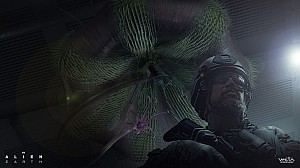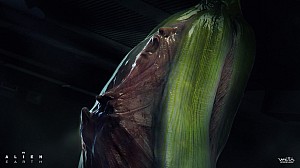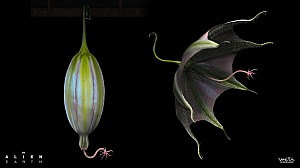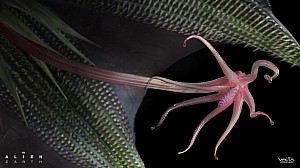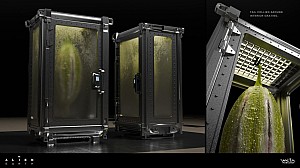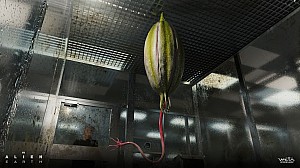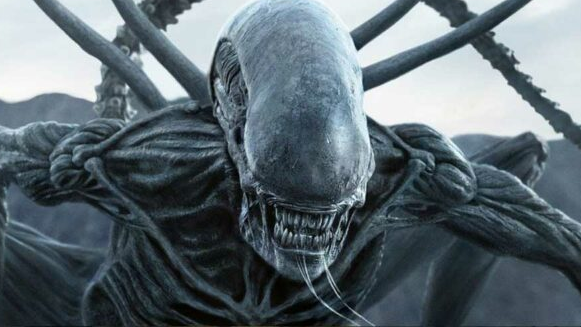This post was published by a guest. The views expressed are those of the author and do not necessarily reflect the views of alien-covenant.com.
For decades, the Xenomorph from the Alien franchise has haunted our collective nightmares. It is a masterpiece of creature design: a sleek, biomechanical predator that taps straight into Freudian fear. But the enduring horror of the Xenomorph goes beyond its menacing appearance. Unlike many movie monsters, its scariness is rooted in something far more profound: a terrifyingly plausible biological framework. The creature feels less like pure fantasy and more like a real, albeit alien, product of evolution.
This is where the films move past simple horror and become a fascinating case study in a field known as speculative evolution. This discipline uses the principles of biology and evolution to imagine how life might develop under different environmental conditions. It is a creative exercise that requires a deep understanding of scientific concepts, much like a student might hire an affordable college essay writer for hire online to help structure a complex scientific argument. By examining the Xenomorph through this lens, we can see that its most horrifying traits are exaggerated versions of real survival strategies found right here on Earth.
The Ultimate Survivor: A Masterclass in Adaptation
The Xenomorph is famously described as a “perfect organism,” whose “structural perfection is matched only by its hostility.” This perfection is a result of a suite of extreme adaptations that make it an apex predator in any environment. The films offer a rich text for analyzing how evolution might solve problems in the most brutal and efficient ways possible.
One of its most iconic features is molecular acid for blood. From a biological standpoint, this is a brilliant, multi-purpose evolutionary trait. It serves as a near-perfect defense mechanism, ensuring that any attempt to wound the creature is a mutually destructive act. This is a classic example of a trait that makes an organism incredibly difficult for a predator to handle, a concept seen in real-world creatures like the poison dart frog or the bombardier beetle, which sprays a boiling chemical concoction to deter attackers. The Xenomorph’s acid blood is simply a more extreme, and therefore more terrifying, version of this evolutionary strategy.
Furthermore, its biomechanical design, famously conceived by artist H.R. Giger, suggests a creature perfectly fused with its environment. Its elongated head, lack of visible eyes, and skeletal exoskeleton point to a life form that evolved in extreme conditions, perhaps in total darkness where sight is useless. Like deep-sea creatures that navigate using pressure senses and echolocation, the Xenomorph is a product of its unseen, hostile homeworld, making its presence on a well-lit spaceship all the more unsettling.
The Parasitoid Life Cycle: A Horror Found in Nature
The Xenomorph’s multi-stage life cycle is one of the most horrifying concepts in cinematic history, and it is also one of its most scientifically grounded. The process, from the Facehugger implanting an embryo to the Chestburster violently emerging from its host, is a textbook example of a parasitoid life cycle. The same strategy appears in hundreds of thousands of insect species on Earth.
The most famous example is the parasitoid wasp, which lays its eggs inside a living host, such as a caterpillar. The wasp larvae then hatch and consume the host from the inside out, carefully keeping it alive until they are ready to emerge. The Xenomorph simply scales this process up to a terrifying, human-sized level. The horror comes from its chilling plausibility. Impossibility is not the point. The films force us to confront a real, brutal aspect of nature that we prefer to ignore. It is a difficult topic to research, and for complex subjects like this, a student might consult an essay writing service such as EssayService to ensure their biological explanations are clear and accurate.
DNA Reflex and the Eusocial Hive
Later films in the franchise introduced two concepts that add even more depth to the Xenomorph’s biology: the “DNA Reflex” and its hive-based social structure. The DNA Reflex, most prominent in Alien 3, reveals that the creature incorporates genetic traits from its host, resulting in a faster, quadrupedal variant when born from a dog. This is a fictionalized take on a real biological process known as horizontal gene transfer, where organisms can exchange genetic material outside of traditional reproduction. While exaggerated in the film, it points to a creature with an incredibly adaptive genome, capable of rapidly evolving to suit its immediate environment.
The introduction of the Queen in Aliens transformed the creature from a solitary hunter into a member of a eusocial hive, much like ants, bees, or termites. This structure explains their rapid proliferation and coordinated attacks.
This hive includes:
- A single Queen: Responsible for all reproduction.
- Warriors/Drones: Sterile individuals who build the nest, gather hosts, and defend the hive.
This social structure is one of the most successful evolutionary strategies on Earth, allowing these insect colonies to dominate their ecosystems. By giving the Xenomorphs a Queen, the film turns them from a single threat into a relentless, self-sustaining biological force.
Conclusion: The Science of a Perfect Nightmare
Alien endures as a timeless masterpiece of horror because of what the Xenomorph is, beyond how it looks. It is a terrifyingly logical creation, a collection of the most ruthless and efficient survival strategies found in nature, all rolled into one formidable organism. It serves as an incredible, if horrifying, teaching tool for the principles of speculative evolution. The films show that the most profound scares spring from the dark, unexplored corners of the natural world rather than pure fantasy, proving that even in fiction, the scariest monsters are the ones that could, just maybe, be real.

How Licensing Keeps Players Safe from Dishonest Casinos
Online casinos attract millions of people who desire to have fun and, perhaps, win some real money. It is not merely that you can have fun when you ga...

Responsible play at 1win casino: a modern approach to safe gaming
Explore how 1win Casino supports safe, balanced gaming with limits, self-control tools, and mindful play practices that help players enjoy betting longer and with more confidence.
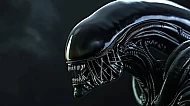
Why Scene-Timing Apps Are Becoming Essential for Movie Fans
Movie culture has changed dramatically over the years. Audiences today expect convenience, flexibility, and control over how they watch films—wh...



